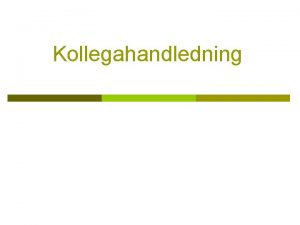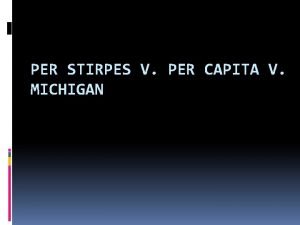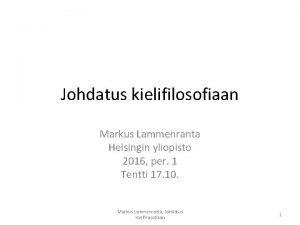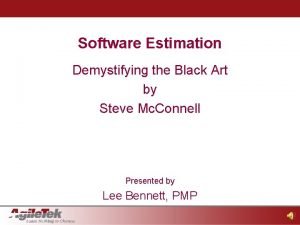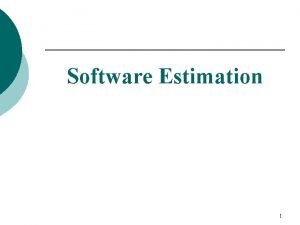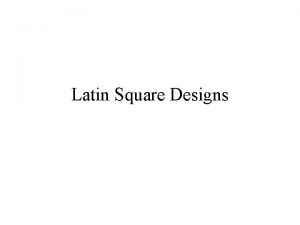per stirpes demystifying some legal latin per stirpes









- Slides: 9

per stirpes demystifying some legal latin

per stirpes historical meanings

�Per stirpes (pronounced stir-peas) describes the way that branches of a family will inherit an estate. �There are three versions of per stirpes, strict (English), modern, and per capita and each generation. per stirpes

�The strict (English version) of per stirpes. This system treats each line of descendents equally. Property is divided equally at the first generation. If one member of the first generation is deceased, his children take his share by representation. per stirpes

You Child one (deceased) Grandchild one (takes 25% by representation) Child two (takes 50%) Grandchild two (takes 25% by representation) strict per stirpes

�Oklahoma uses modern per stirpes. �Modern per stirpes works as strict per stirpes in the event that all or some of the first generation are living. In the event that all of the first generation are deceased, however, modern per stirpes allows all members of the first generation with living members to take equally. modern per stirpes

You Child one (deceased) Grandchild one (takes 33. 3%) Grandchild two (takes 33. 3%) modern per stirpes Child two (deceased) Grandchild three (takes 33. 3%)

�Per capita at each generation makes the first distribution of assets at the first level where one or more descendents are alive. Shares of deceased members of that generation are pooled and dropped to the next generation and distributed equally. Per capita at each generation

You Child one (deceased) Grandchild one (takes 22. 2%) Grandchild two (takes 22. 2%) Child two (deceased) Child three (takes 33. 3%) Grandchild three (takes 22. 2%) Per capita at each generation

